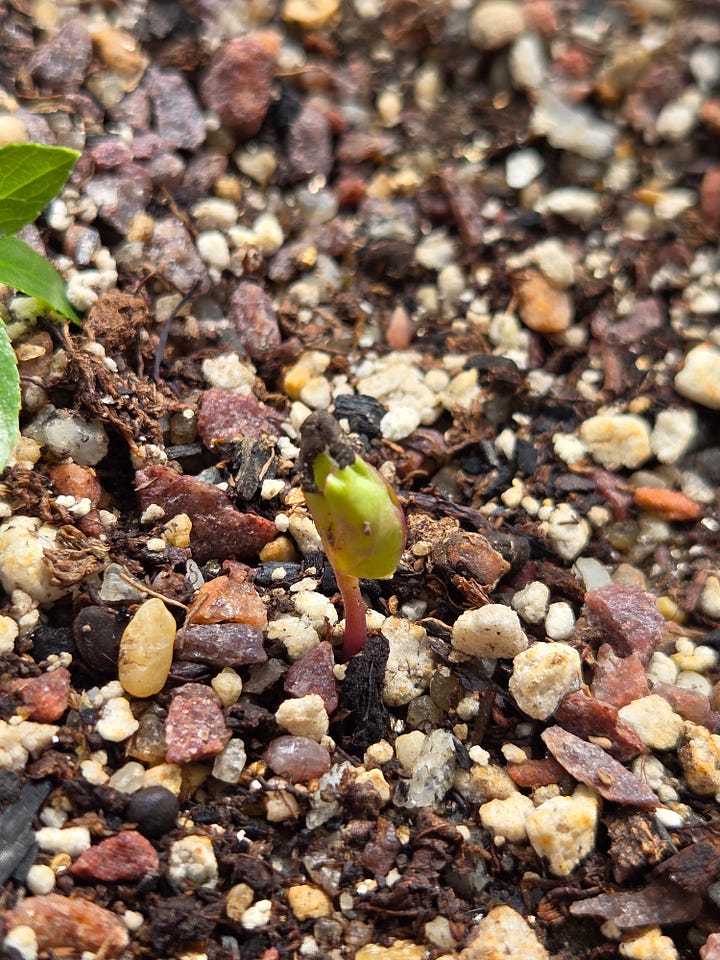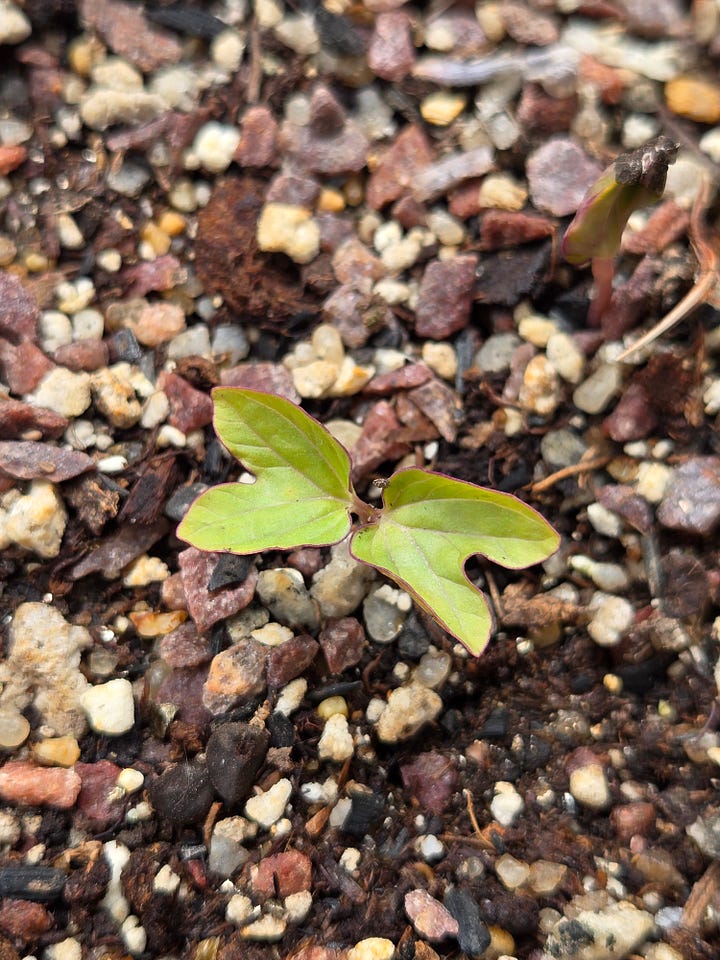Cotyledons, also known as seed leaves and embryonic leaves, are small leaves held inside the seed and emerge before true leaves. They are the epitome of spring…they are new life itself!
Finding cotyledons at home as part of seed-starting for the garden or out in the forest is a joyful experience. Especially when they are THIS CUTE!
More on what cotyledons really are
Cotyledons contain stored energy and are part of the “plant embryo”. The first thing to emerge from a seed is the radical or small root which burrows down. Soon, followed by the upward emergence of the cotyledons. They defy gravity, growing upwards—sometimes at such a a fast speed there isn’t time to shed the seed!


Systematic Siesta
Skip this paragraph if the classification of living things isn’t your jam.
For a long time angiosperms (flower plants) were divided into two distinct groups based on them having one or two cotyledons. These groups were monocotyledon and dicotyledon. Recent discoveries in the 1900s have shown that the classification of dicotyledon wasn’t the best of most exact descriptor. This second group (dicot) was shrunk to the distinction of eudicots, which includes only some dicots. As scientists learn more about plants we get closer to a more exact explanation of how things evolved and are related. It is a little messy as things still shake out, but oh so exciting!
We now assume our regular program on cute cotyledons
Cotyledons are not able to photosynthesize or produce new energy. Once their energy reserves are used up…that’s it! They whiter away as new leaves emerge. They are incredibly important to the survival of the baby plant. Without these leafy batteries the plants need a relationship with fungi…more on that later.
I have to wonder, does their shape play into anything specialized? They come in all shapes and sizes. Like the linden above, which I found last week. Like WOW! Someone described them as angel leaves <3 Many cotyledons are simple looking like the below maple seedlings (Acer sp.). The cotyledons are the the seafoam green; the true leaves are the chartreuse green emerging in the center of the next photo.
The number of cotyledons is not always 1 or 2
I love seeing baby pine trees on the ground. When the seeds are stuck on top they resemble tinsel spindle toys from the 1990s. I figured that the number of cotyledons would match the number of needles in fascicles (bundles). For example eastern white pine has bundles of 5 needles. This is probably a baby eastern white pine yet it has 9 cotyledons! I read that some pines have up to 24…TWENTY FOUR cotyledons. It would look like a pom pom!
The number of cotyledons can also be zero!
This is probably the first “cotyledon” that made me give them more thought. These are young Syneilesis palamata or umbrella leaf plants. They are related to daisies in Asteraceae. This group of plants typically have two cotyledons. They are eudicots, previously dicots.
However, they only have one leaf. eFlora, a reputable international resource for botanists, describes this entire genus as “seedlings with a single cotyledon”. Odd.
I then discovered a new botany term: acotyledon. This concept refers to plants lacking cotyledons. Their first leaves are just true leaves. Many orchids are/have acotyledon; their seeds have a intricate relationship with microryza which will provide the fuel for the young plants. A paper written by Herwig Temper proposes that “the supposed single cotyledon of Syneilesis possesses a petiole and a rounded blade, and it shows all characteristics of normal foliage leaves.” Interesting! How would they have the energy? Hmmmm….
Well, there you have it. A few adorable cotyledons and some interesting science tidbits and thoughts. Share your favorite cotyledons in the comments. This photo of nasturtiums was shared with me by a friend…cutie patooties!










